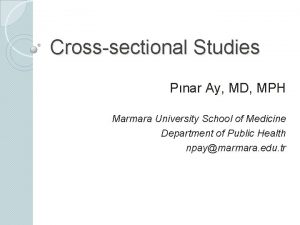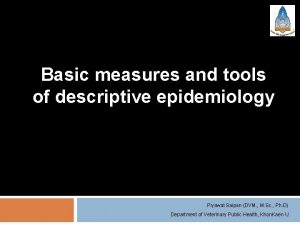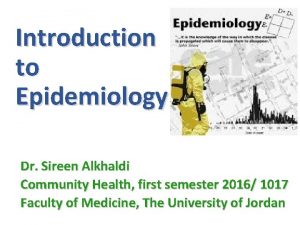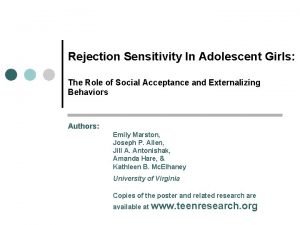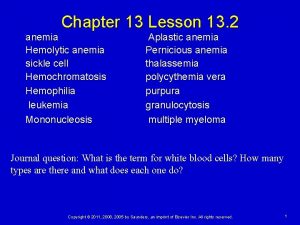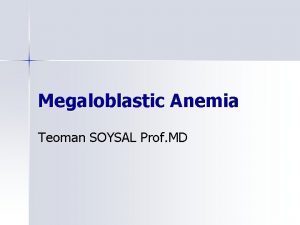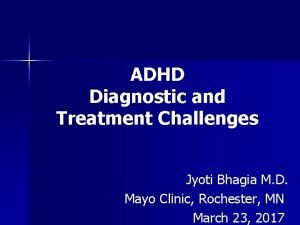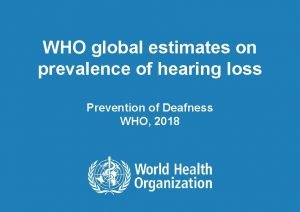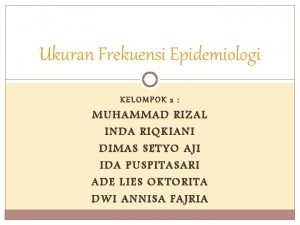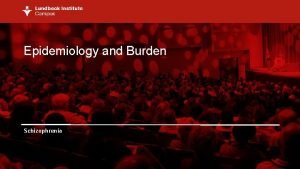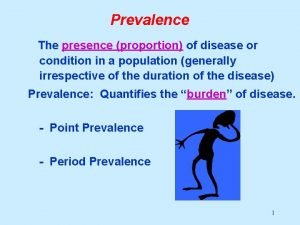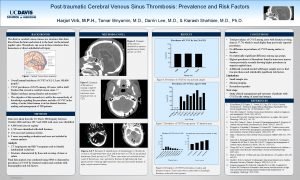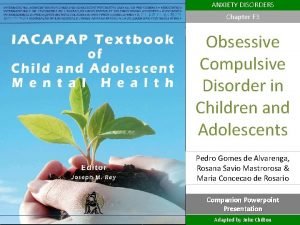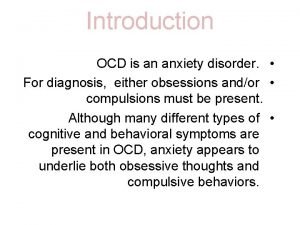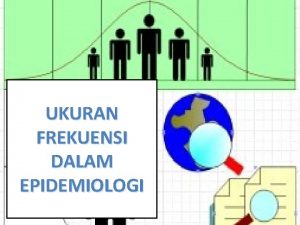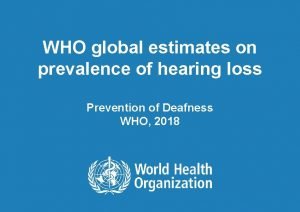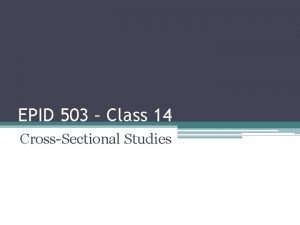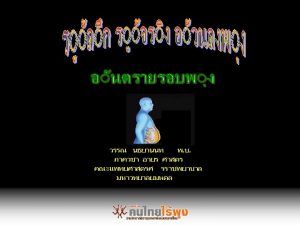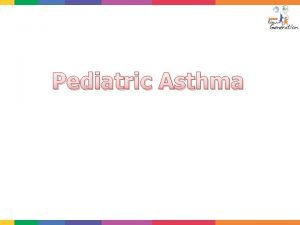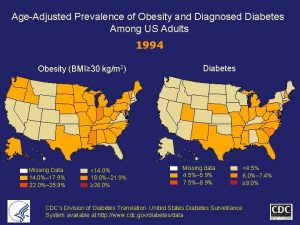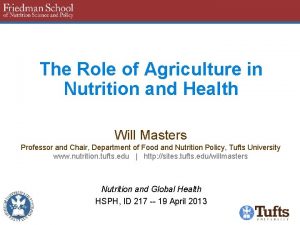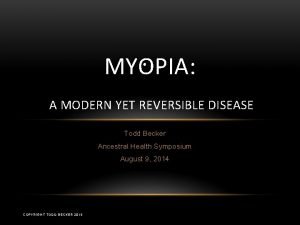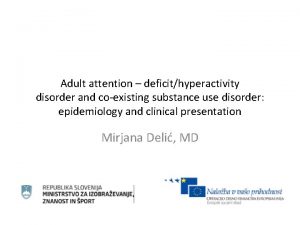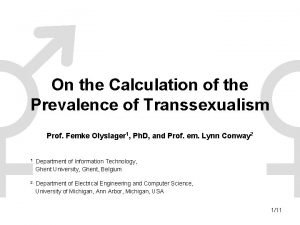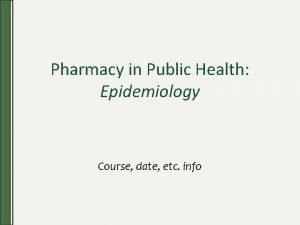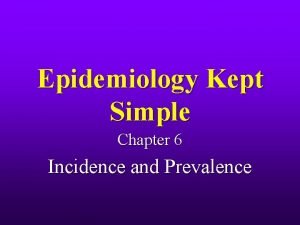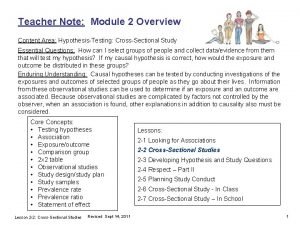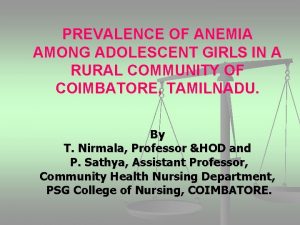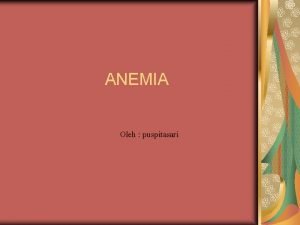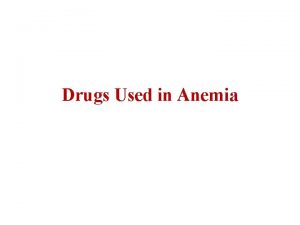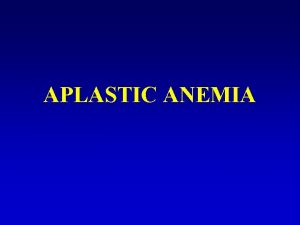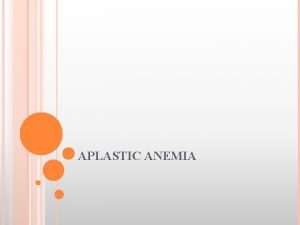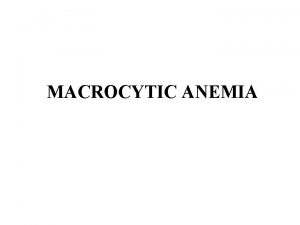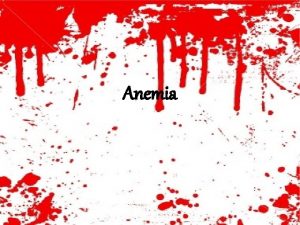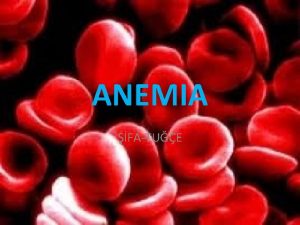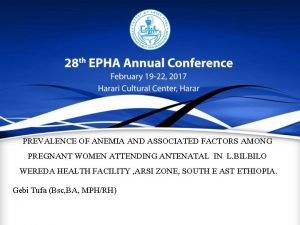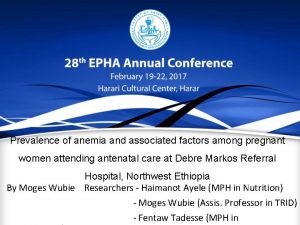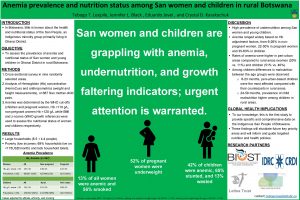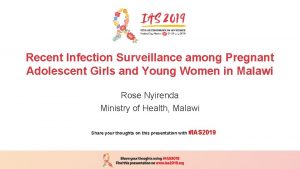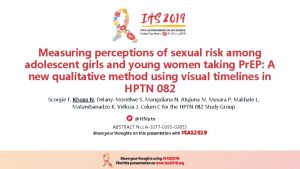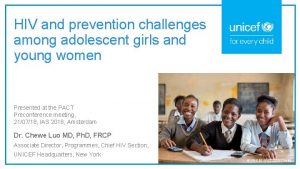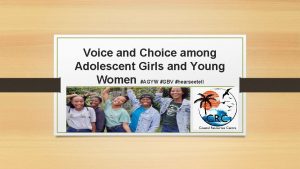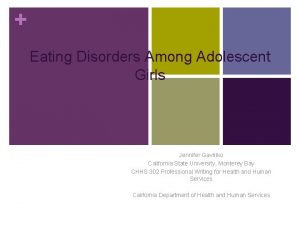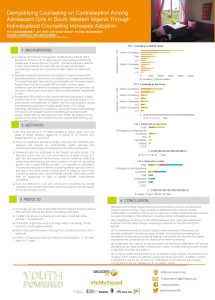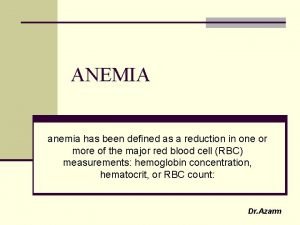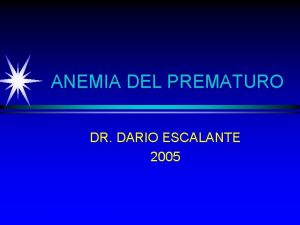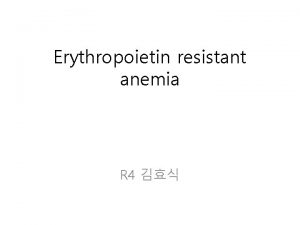PREVALENCE OF ANEMIA AMONG ADOLESCENT GIRLS IN A









![n n n Majority 38. 7% [36] fathers’ of the students were coolie worker, n n n Majority 38. 7% [36] fathers’ of the students were coolie worker,](https://slidetodoc.com/presentation_image_h2/0c8cbe11944f111e2e147e8a72f8613b/image-10.jpg)
























- Slides: 34

PREVALENCE OF ANEMIA AMONG ADOLESCENT GIRLS IN A RURAL COMMUNITY OF COIMBATORE, TAMILNADU. By T. Nirmala, Professor &HOD and P. Sathya, Assistant Professor, Community Health Nursing Department, PSG College of Nursing, COIMBATORE.

Introduction n Iron Deficiency is the most common micronutrient deficiency which affects more than 2 billion population worldwide, leading to anemia in more than 40% of women of reproductive age in the developing world and 7 -12 % in developed countries (WHO, 2004). Prevalence of anemia among adolescents is more than 25% in developing countries and In Tamil Nadu, 1 -10 per 100 adolescent girls are prone for anemia and in Coimbatore, 1 -10 per 19 adolescet girls are anemic( Government of Tamilnadu, 2004)

Objectives n n n Assessment of factors affecting the haemoglobin level of adolescent girls. Physical assessment of adolescent girls to identify anemia. Estimation of haemoglobin level to confirm anemia among adolescent with signs of anemia

Research methodology Ø Ø Ø Descriptive survey design was utilized. Population: The adolescent girls studying in IX standard at Government Higher Secondary school, Arasur, Coimbatore District. Samples: 93 girls studying in IX standard were included in the study.

Programme Outline 1. Assessment of the socio-demographic data and other factors influencing anemia such as menstrual cycle, birth order and intake of iron rich diet etc was done using a questionnaire. 2. A check list was used to identify the signs of anemia among adolescent girls. 3. The adolescent girls who showed the signs of anemia underwent hemoglobin estimation through cyanmethglobin method using Rabkin solution.

Major findings of the study: n n n Out of 93 adolescent girls examined, 72 girls had the signs of anemia. Among 72 girls showing the signs of anemia, 44 girls (61%) were diagnosed to be anemic. 30 girls were mildly anemic, 14 girls were moderately anemic and no one found to be severely anemic

On Examination, • • • Sixty three girls had pale conjunctiva 60 girls had pale nail color Considering the BMI, fifty three girls were thinly built, 40 were normally built and no one was found to be over weight or obese Out of 93 students, 35 students suffer from severe blood loss during menstruation.

Socio Demographic Data n n The age of the students ranged from 13 -16 years. Majority of girls 49 [52%] were at the age 14 years, 40. 8% are at the age of 15 years. Mean = 14. 06. Seventy eight (83. 8%) of girls belong to nuclear type of family, 15. 1% [14] of girls belong to joint family, 1. 1% [1] belongs to extended family.

Distribution of Samples according to their Parent’s Occupation
![n n n Majority 38 7 36 fathers of the students were coolie worker n n n Majority 38. 7% [36] fathers’ of the students were coolie worker,](https://slidetodoc.com/presentation_image_h2/0c8cbe11944f111e2e147e8a72f8613b/image-10.jpg)
n n n Majority 38. 7% [36] fathers’ of the students were coolie worker, 21. 5% [20] were mill worker and businessman. It is noticed that the haemoglobin level of daughters of house wives are better compared to other working mothers. 71%(25/35) of the daughters of working mothers are anemic compared to 51%(19/37) of the daughters of housewives.

Distribution of Samples according to their parents’ Educational status

Educational status of the parents n. Majority of girls’ father and mother were educated up to secondary school level. n. The education status of the father and mother is positively co- related with the hemoglobin value of their daughters. Especially mother’s education has a strong influence on the status of anemia in their children.

Distribution of Samples According to Order of Birth

Order of Birth n n 41 (44. 1%) girls had one sibling, 33 [35. 5%] had two siblings and only 10. 7% had three siblings. One had up to 5 siblings. The hemoglobin level of the girls was negatively co-related with the number of siblings.

Distribution of samples According to their Parent’s Monthly Income

Monthly Income of the Family n n Twenty eight (30. 1%) student’s family earns a monthly income of Rs. 1000 – 1500, 21. 5% [20] of students’ family earn a monthly income of Rs. 1501 -2000 and 2501 -3000. It is found that the income of the family and the hemoglobin level of adolescent girls are co- relating positively.

Menstrual History n n n Among 72 girls, 12 of them had not attained menarche. While considering the age at menarche, three girls have attained early menarche at the age of 11 years and seven at the age of 12. Four had late menarche at the age of 15 years, majority (25) of the girls had menarche at the age of 13 years followed by 20 at the age of 14 years.

Menstrual History n n Among the 60 girls, only 10 of them had irregular menstruation. But around 35 of them claim to have excess bleeding during menstruation. The co-relation between the age at menarche and haemoglobin level showed a positive relationship, meaning as the age at menarche delays there improvement in the hemoglobin level.

DIETARY HISTORY

n Majority of girls 87. 09% (81) take three meals per day, 11. 82% (11) take two meals per day, only 1. 1% (1) takes more than three meals per day.


n n Majority of girls (53) consumes meat monthly once, 23 girls consume fish monthly one, 37 girls consume chicken monthly once. Majority of girls (69) consumes green leafy vegetables weekly once, 52 girls consume drumstick leaves weekly once, 28 girls consume pomegranate weekly once, 13 girls consume ragi weekly once, 7 girls consume jaggery weekly once.


PHYSICAL ASSESSMENT


n Majority of girls height is 141 -149 Centimeters (47), 41 girls are of height 151159 centimeters, 3 girls are of height > 160 centimeters, 2 girls are of height 131 -140 centimeters.


Majority of girls weight ranged from 40 -49 kilogram (40), n 39 girls were weighing 30 -39 kilograms, n 13 girls were of 50 -59 kilograms, n only one girl weighed 20 -29 kilograms. n

Estimation of Hemoglobin level


Estimation of Hemoglobin level: n n The hemoglobin level of adolescent girls was estimated using cyanmethoglobin method. It was found that out of 72 girls who had the signs of anemia, 44( 61%) were diagnosed to have anemia. It makes that 47 %, ( 44/93) nearly half of the population under the study was suffering from anemia. Among the 44, thirty were mildly anemic, 14 were moderately anemic and no one was severely anemic.

Implication n n As 47% of the adolescent girls who had the signs of anemia are diagnosed to be anemic. The investigator strongly recommends consumption of iron supplements and dietry modification for moderately anemic and dietary modification for mildly anemic adolescents. It is advisable to educate the adolescents and the school teachers on identification of anemia in early stage and its management. This will definitely enhance the adolescent health to face the pregnancy later.

Conclusion n n Adolescence, as a period of growth and development, is considered the best time to intervene, to assist in physical and mental development, and to prevent later maternal anemia. It is known that the adolescent girls are prone for anemia. Lets join together to help them in eliminating it.

THANK YOU
 Period prevalence vs point prevalence
Period prevalence vs point prevalence Period prevalence vs point prevalence
Period prevalence vs point prevalence Period prevalence vs point prevalence
Period prevalence vs point prevalence Period prevalence vs point prevalence
Period prevalence vs point prevalence Prevention of anemia in adolescent girl
Prevention of anemia in adolescent girl Pernicious anemia vs megaloblastic anemia
Pernicious anemia vs megaloblastic anemia Polycythemia differential diagnosis
Polycythemia differential diagnosis Pernicious anemia vs megaloblastic anemia
Pernicious anemia vs megaloblastic anemia Prevalence ratio
Prevalence ratio Prevented fraction
Prevented fraction Uuuu_limited
Uuuu_limited Who global estimates on prevalence of hearing loss 2020
Who global estimates on prevalence of hearing loss 2020 Frekuensi epidemiologi adalah
Frekuensi epidemiologi adalah Prevalence of schizophrenia
Prevalence of schizophrenia Prevalensi adalah
Prevalensi adalah Cvst incidence
Cvst incidence Ocd behaviors
Ocd behaviors Egosyntotic
Egosyntotic Point prevalence rate adalah
Point prevalence rate adalah Ukuran asosiasi adalah
Ukuran asosiasi adalah Who global estimates on prevalence of hearing loss 2020
Who global estimates on prevalence of hearing loss 2020 Prevalence ratio
Prevalence ratio Prevalence of obesity
Prevalence of obesity Prevalence
Prevalence Age adjusted prevalence
Age adjusted prevalence Incidence density formula
Incidence density formula Obesity prevalence europe
Obesity prevalence europe Print pushing myopia
Print pushing myopia Adhd prevalence by country
Adhd prevalence by country Descriptive epidemiology
Descriptive epidemiology Prevalence calculation
Prevalence calculation Prevalence rate formula
Prevalence rate formula Calculate relative risk
Calculate relative risk Prevalence vs incidence
Prevalence vs incidence Prevalence ratio
Prevalence ratio

